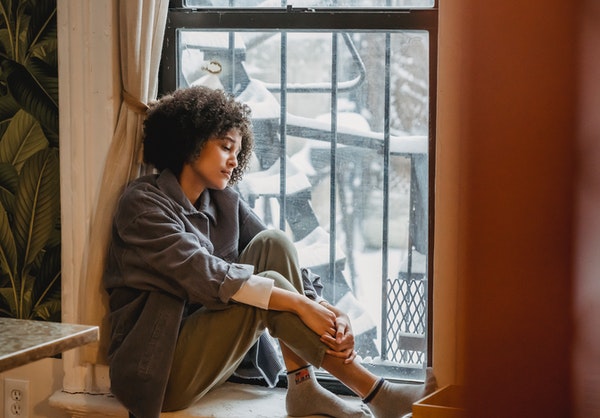
Photo by Liza Summer from Pexels.
The fall and winter seasons bring joy for a lot of people— holidays like Thanksgiving and Christmas always come with widespread celebration and merriment. However, for others, the change of the seasons is accompanied by unwelcome difficulties, especially for those suffering from Seasonal Affective Disorder (SAD). SAD is a type of depression that is caused by weather changes. It is believed that the lack of sunlight experienced during colder months causes SAD to strike the hardest.
For those that are most susceptible to SAD, the lack of sunlight can quickly affect their mood. The Cleveland Clinic shares a few reasons why.
- Biological clock change. Your internal clock is responsible for regulating mood, sleep, and hormones. Therefore, when that clock is disrupted by the lack of sunlight, it can become difficult to manage your emotions.
- Brain chemical imbalance. The chemicals in the brain send messages throughout the body. Serotonin is one of the chemicals instrumental to harboring natural feelings of happiness. Sunlight is a regulator of serotonin levels, so the fall and winter months can feel especially blue to SAD sufferers.
- Lack of Vitamin D. Similarly, the sun plays a large role in Vitamin D production. Without regular exposure to sunlight, Vitamin D levels drop, which in turn drops serotonin levels and affects mood.
- Melatonin overload. Melatonin is the chemical that dictates your sleep patterns. The overproduction of melatonin can cause people to feel sleepy and sluggish, which is exactly what happens during colder seasons when people go long periods of time in darkness.
Treating SAD with Light Therapy
A common method of treating SAD is light therapy. Patients undergoing light therapy will deliberately expose themselves to strong artificial light with the purpose of reactivating the body’s photosensitive rhythms.
The only equipment needed for light therapy is a light box. However, before you go purchasing a box, you should discuss it with your doctor to ensure that you get the correct one for your specific needs and sensitivities. Light therapy boxes work when patients allow the light to enter their eyes indirectly. This means that you can and should complete therapy while also performing other tasks, like eating, household chores, working at the computer, watching tv, etc.
There are a few key elements of light therapy that you need to consider if you want to get the most out of it. They are light intensity, duration, and timing.
- Intensity. It is recommended to use a 10,000-lux light box and to keep it at least 16-24 inches from the face during sessions.
- Duration. With a 10,000-lux light box, therapy only has to last for 20-30 minutes a day. However, lower intensity light boxes need to be used for longer periods of time.
- Timing. Light therapy is commonly done in the morning, upon waking. However, your doctor should be able to recommend a schedule that works for you.
It is not guaranteed that light therapy will completely get rid of SAD, however, it can relieve symptoms and make the fall and winter seasons more enjoyable.
Life Insurance Questions?
We hope that this information on light therapy and SAD is useful to you.
If you’d like to learn how we can help you plan your retirement, call Empower Brokerage at (888) 539-1633 to speak to one of our Life and Annuity experts or leave a comment down below.
Get affordable life insurance quotes by clicking here.
See our other websites:

